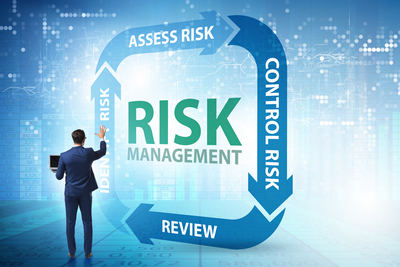![]()
The collapse of Silicon Valley Bank (SVB) was a sudden jolt to the banking system. SVB was a leading financial institution founded in 1983 that catered to the tech industry. This unexpected development has had far-reaching consequences, particularly regarding risk evaluation for Chief Financial Officers (CFOs) tasked with assessing and mitigating potential risks within their organizations.
I am pleased to note that First Citizens Bank (Nasdaq: FCNCA) announced on March 27, 2023, that it entered into an agreement with the Federal Deposit Insurance Corporation (FDIC) to purchase all of the assets and liabilities of Silicon Valley Bridge Bank, N.A. The transaction is structured as a whole bank purchase and assumption agreement with loss share coverage. Silicon Valley Bank is now a division of First Citizens Bank.
While the acquisition of SVB by First Citizens is a successful one, there are lessons to be learned from the original event. In this article, I will explore the fallout, identify the emerging risks, and discuss what I think it means for CFOs as they navigate an increasingly complex risk landscape.
The Fallout:
The failure disrupted the financial ecosystem in multiple ways.
First, prior to an acquisition by First Citizens, it left a void in the specialized banking services offered to technology companies, startups, and venture capitalists. The bank was renowned for its deep understanding of the tech industry, and its absence left many companies scrambling to find alternative financial partners who can adequately cater to their unique needs.
Second, it triggered a loss of confidence among investors and stakeholders in the fintech and banking sectors. This raises concerns about the stability and resilience of other financial institutions, leading to increased scrutiny and potentially higher borrowing costs for tech companies needing financing.
Prominent Risks for CFOs to Consider.
- Concentration Risk: A bank with large customer base highlights the vulnerability of companies heavily reliant on a single financial institution. CFOs must now evaluate their own organizations' concentration risk and take steps to diversify banking relationships to mitigate future disruptions.
- I've heard much talk about the "rule of 3" in this regard. - The "rule of 3" is a principle that suggests companies should focus on 3 key priorities or initiatives at a time to maximize the likelihood of successful execution. The "rule of 3" refers to limiting major change initiatives and priorities to just 3 critically important ones at a time to increase focus and the chances of turning strategy into action. It's about focus and execution.
- I've heard much talk about the "rule of 3" in this regard. - The "rule of 3" is a principle that suggests companies should focus on 3 key priorities or initiatives at a time to maximize the likelihood of successful execution. The "rule of 3" refers to limiting major change initiatives and priorities to just 3 critically important ones at a time to increase focus and the chances of turning strategy into action. It's about focus and execution.
- Liquidity Risk: The sudden failure also underscores the importance of assessing liquidity risk. CFOs must ensure their organizations have sufficient liquidity buffers to withstand unforeseen disruptions. Stress testing for severe worst-case scenarios will enable CFOs to determine liquidity needs and contingencies in unlikely but plausible situations. This advanced preparedness includes accessing alternative funding sources, establishing robust cash management practices, and rigorous stress testing of liquidity positions.
- Counterparty Risk (the probability that the other party in an investment, credit, or trading transaction may not fulfill its part of the deal and may default on the contractual obligations): this raises concerns about counterparty risk, particularly for those entities with exposure to the bank. CFOs should review and re-evaluate their counterparty risk management practices, including conducting due diligence on their financial partners and implementing appropriate risk mitigation strategies.
- “Counterparty” refers to the opposing party or partner in a financial contract or transaction that has assumed financial obligations as part of the deal. Assessing counterparty risk is an important aspect of financial transactions.
- Counterparty risk refers to the risk that the other party in a financial contract will default on their obligations. Counterparty risk is the potential financial loss an investor faces due to the counterparty in a contract failing to meet its agreed obligations. Assessing and managing counterparty risk is crucial in derivatives trading.
- Regulatory Risk: This may prompt increased regulatory scrutiny in the financial industry. CFOs should stay informed about regulatory changes and ensure compliance with evolving regulations to minimize legal and operational risks associated with non-compliance. A practical example is the deposit insurance limits available and how to spread risk and deposits over multiple banking institutions.
- Reputational Risk: Their high-profile nature may lead stakeholders to view associated companies less favorably. Proactively managing reputation is essential.
Implications for CFOs:
 Diversification of Financial Relationships: CFOs should proactively seek to diversify banking relationships, reducing concentration risk by engaging multiple financial institutions that cater to their organization's specific needs. This diversification will provide excellent stability and options in times of crisis.
Diversification of Financial Relationships: CFOs should proactively seek to diversify banking relationships, reducing concentration risk by engaging multiple financial institutions that cater to their organization's specific needs. This diversification will provide excellent stability and options in times of crisis.
Strengthening Risk Management Frameworks: This serves as a wake-up call for CFOs to reassess and strengthen their risk management frameworks. Robust risk identification, assessment, and mitigation strategies should be implemented to address emerging risks in the financial sector.
Enhanced Due Diligence: CFOs must conduct thorough due diligence on their financial partners, assessing their stability, regulatory compliance, and ability to support the organization's financial needs. Digital tools and advanced data analysis techniques can augment traditional due diligence methods to enable more rigorous and real-time assessments. Regular monitoring and reassessment of these partners will be crucial to mitigating counterparty risk.
Scenario Planning and Stress Testing: CFOs should develop robust scenario planning models and stress tests and ensure they are updated regularly with new data and developments. This will enable accurate evaluation of potential impacts and risks as conditions evolve. Stress testing liquidity positions and evaluating the organization's ability to withstand adverse events will enable better risk preparedness.
Conclusion
I think the most challenging part of this process is managing the business relationships we have developed over the years. Especially with our bankers where both parties have usually worked hard to build trust and confidence for mutual benefit.
At this juncture, the challenge is expanding those relationships to spread the risk. For those of us who have built long-standing relationships that have turned into friendships, expanding your banking relationships to multiple institutions may feel disloyal to those who have served us well over the years. But that's the point at which our professional instincts need to kick in and override the potential guilt or hesitation we might feel as we need to spread our risk among multiple providers.
In the same way that many financial advisers are now questioning the traditional 60/40 stock/bond split, as CFOs, we might need to re-think our strategy in assessing and managing risk, especially in banking and finance relationships. It's not personal; it's just business.
Clear and transparent communication with key stakeholders, including employees, customers, and partners, will be essential during the transition to new banking relationships. Maintaining trust and informing stakeholders of changes will help ease the transition and preserve meaningful relationships.
Get insights into your organization's current level of risk.
This assessment is designed to give you insights into your organization's current level of risk in various categories within your business's finance and accounting arenas compared to industry best practices.
updated 1pm 8-16-2023
About the Author
 Kurt Maass serves as a Partner and Practice Manager for CFO Selections. He is a versatile and accomplished executive with 30+ years of experience in finance, accounting, and operations roles. He has worked extensively in the wireless, landline telecom, e-commerce, manufacturing, and energy conservation sectors, including serving as divisional and public company VP-Finance and CFO and public accounting firm experience.
Kurt Maass serves as a Partner and Practice Manager for CFO Selections. He is a versatile and accomplished executive with 30+ years of experience in finance, accounting, and operations roles. He has worked extensively in the wireless, landline telecom, e-commerce, manufacturing, and energy conservation sectors, including serving as divisional and public company VP-Finance and CFO and public accounting firm experience.
He brings a unique perspective from working with substantial companies (managing operational and capital budgets in excess of $2B annually) and tiny early-stage startups, where he has actively participated in multiple equity and debt financing rounds. He is experienced with International Financial Reporting Standards, having converted a Canadian-GAAP reporting company to IFRS for stock exchange reporting purposes.






